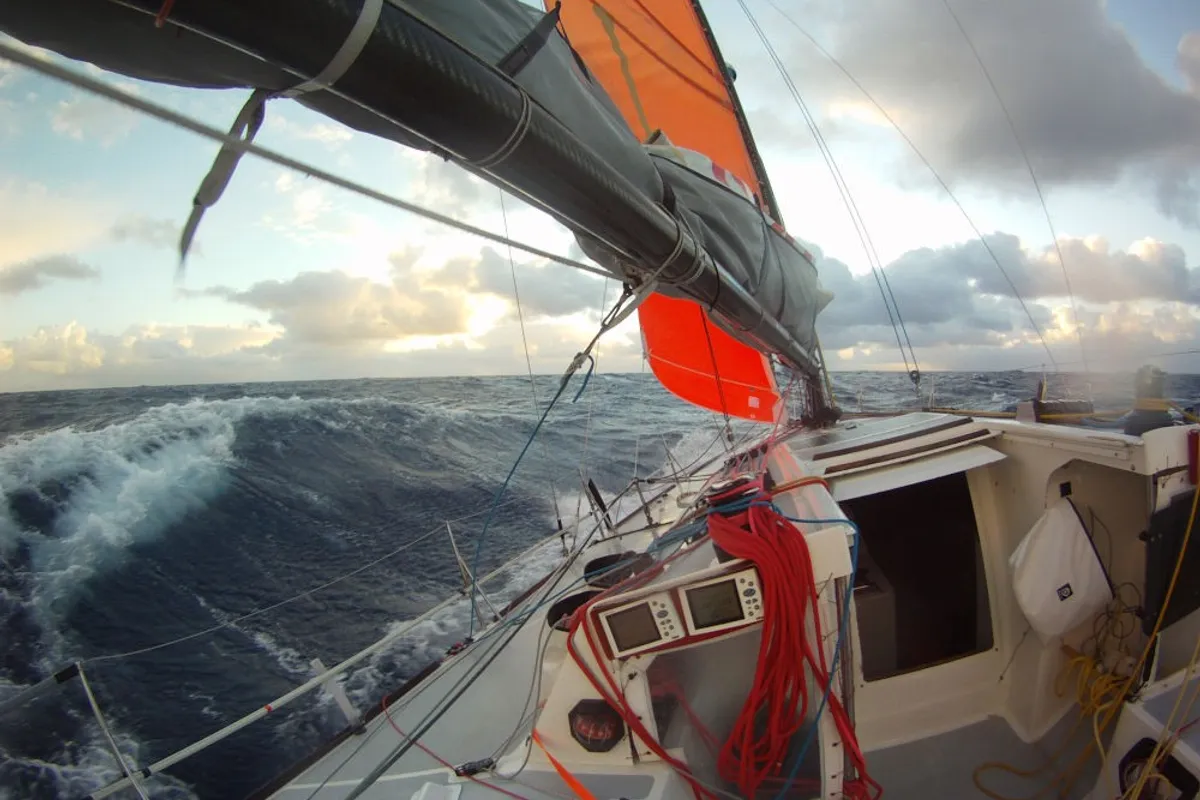Cape Horn – The boat surfs with very little sail in the storm
Translated from the book "Dalla Banca all'Oceano", Longanesi editions, by Marco Nannini.
After the second storm, the wind dropped rapidly, and within half a day it went aft and we could even hoist the big gennaker. Hugo and I celebrate, laugh, joke. The weather for the next few days seems favourable and we can certainly take a break after a really hard week. Seven days of storms, two boats withdrawn, but we managed to overcome the worst without damage. We are en route to Cape Horn from New Zealand.
The navigation proceeds smoothly, the large gennaker gives us beautiful surfs. Soon we will be joined by a ridge of light winds what will slow us down Everything seems under control and the only thing that is really changing is the temperature. It was really cold outside, the humidity in the air was incredible and the sea water is down to 6 degree Celsius. We were still in second place, but the weather seems to open up an opportunity for us to recover miles on Cessna, the boat leading the race.
Racing towards Cape Horn
“Do you think they’ll slow down so much they can we pass them”? asked Hugo.
“Why not? If we positioned ourselves in this area, you see, we too would be at the edge of the ridge of light winds, only further south and with better wind”. Hugo followed me with a puzzled look, then placed the cursor on the point I indicated.
“Que putas, sixty degrees South! Do you really want to push yourself that low?!”
Just as our debate progresseed happily, the autopilot decided it’s time to play one of his tricks on us. The autopilot drive pushed the tiller all the way to one side, without any posibility to react, the boat did an involuntary gybe. We were laid flat by the wind with all the weights on the wrong side and the mainsail resting on the runners and checks. I didn’t even reach the sheets in the cockpit that I hear the gennaker tear again. Nothing we could do. We dowsed it down, but the damage was too extensive to repair. We really didn’t need something like this to happen.
We change to the medium spinnaker and get back on course. We take the more southern route to attempt to overtake our opponent..
Cape Horn 24 Feb. 2012 - The calm before the storm
As expected the ridge of light winds reached us, but then slowly we started to make way again, slowly. Behind the ridge we find pressure and we start making up miles on Cessna, which seems stuck in light airs. Hard to think that a few days ago this was the fiercest sea we had ever seen.
Our tactic works and our comeback is relentless. We manage to reach their same longitude by passing them over fifty miles further south and making good 300 miles over them. I’m in a good mood.
There was a thick fog outside and the boat moved like a ghost on smooth water. With little more than six knots of wind we were sailing at nearly 7 knots. The air was humid and cold and we were very near the freezing point. The water temperature has dropped to four and a half degrees Celsius. It feels like returning to the Great Banks of Newfoundland, during the OSTAR, where I had sailed in absolute silence, in an enchanted forest atmosphere. As then there is that smell of snow in the air.
The icebergs near Cape Horn = “Puta madre, iceberg? Really?”
“We are in a danger area, I think, but the probability should be low.” I showed him the last satellite image provided by the race committee before the start. “We were less than a hundred miles from the known ice limit and some small icebergs could easily have drifted this far.”
“We kept an eye on the radar and if only the fog rose we could also look outside”!
We continued on our course and collected more dividends on our investment. For the first time since the start of the race we are the leading boat. I have no illusion on the possibility of winning the leg. But a mistake or a damage aboard Cessna would be enough to give us to give us the top spot on the podium. To finish first you first have to finish.
Click here to continue reading the article on the GSC website
